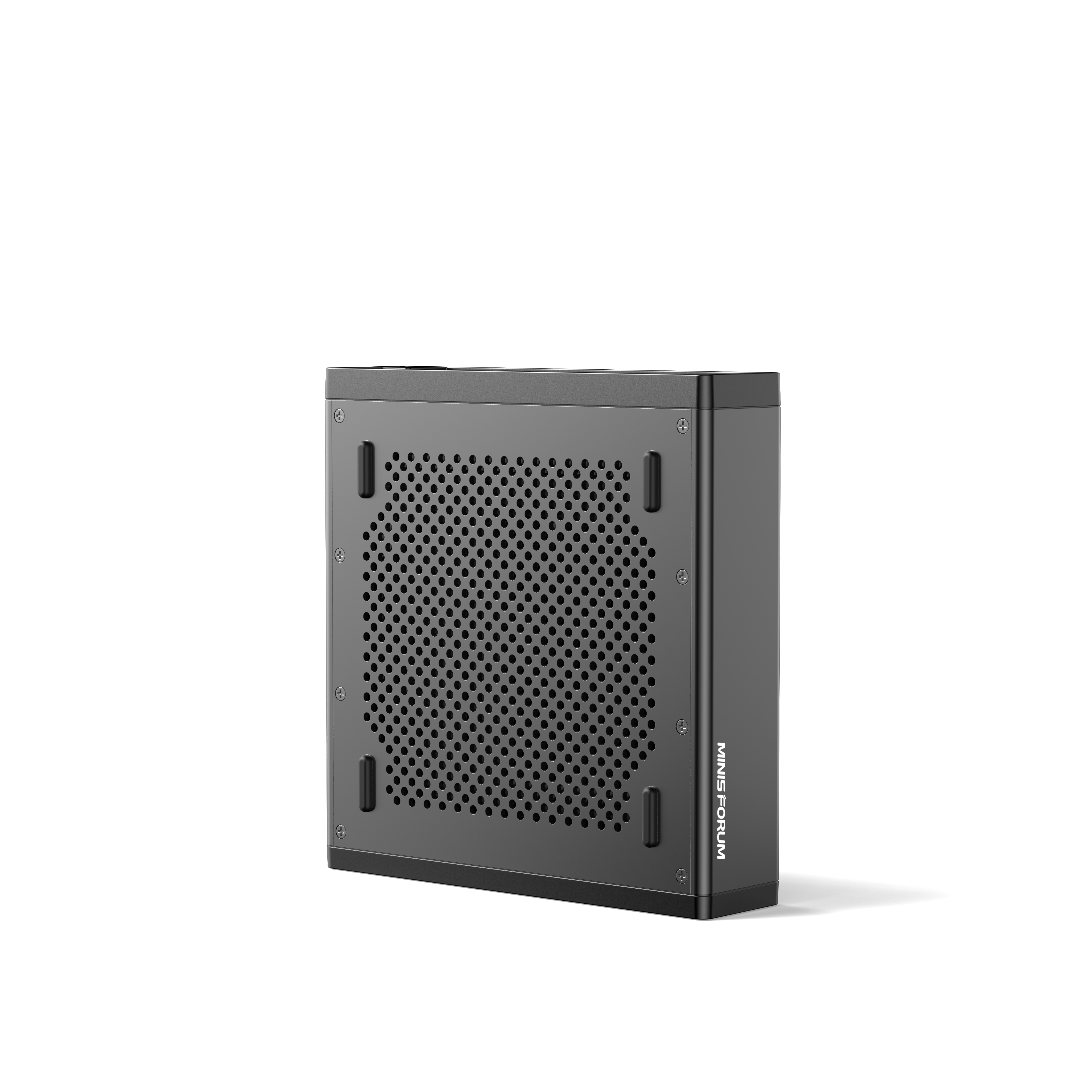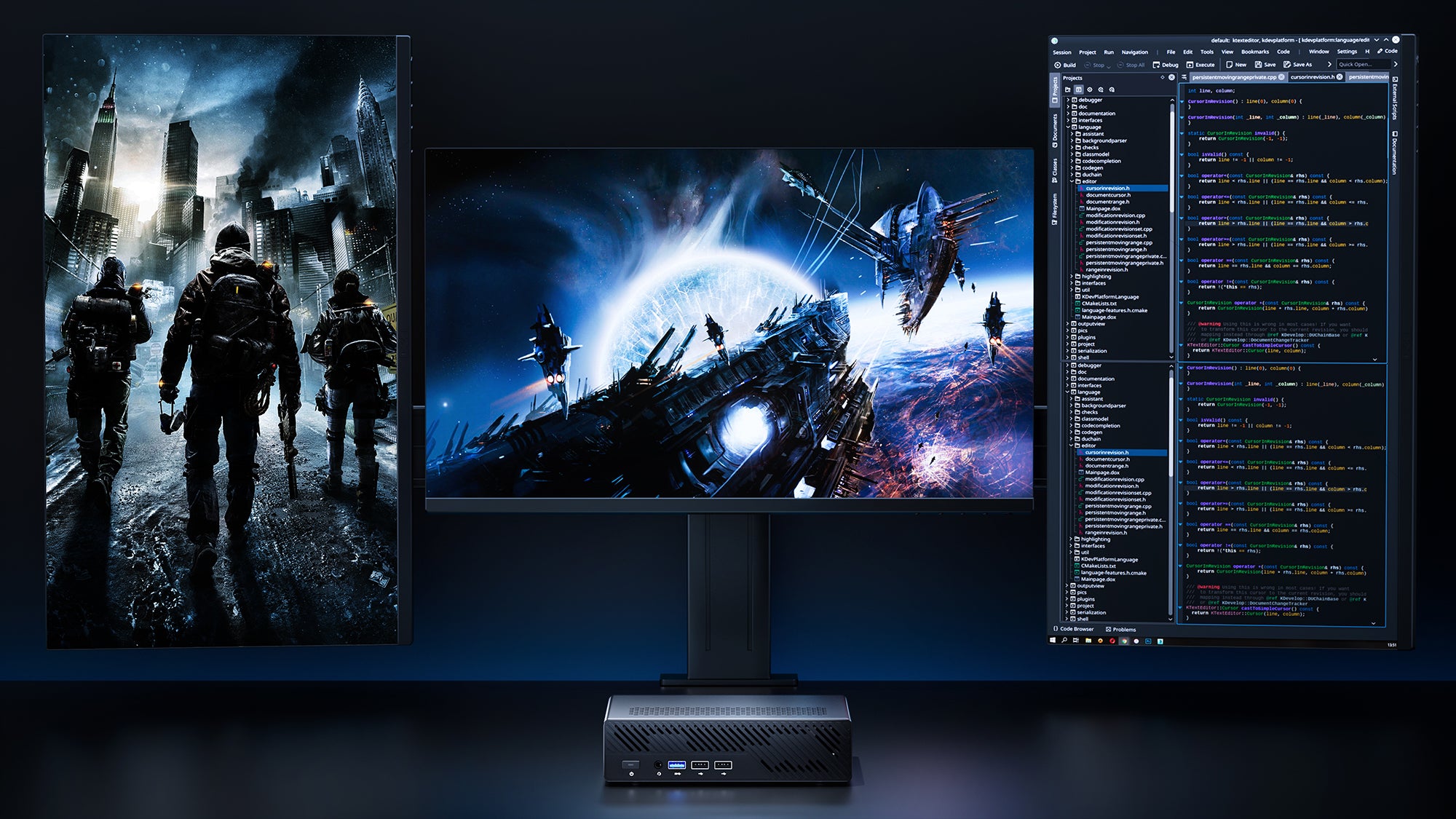
Work Station
MS-01
The MS-01 is the first mini workstation PC introduced by Minisforum. Unlike the usual Mini-PC on the market, it has a total of two 2.5G ports and two 10G ports. The maximum data transfer speed of 25G can be realized via these four interfaces. What other uses does the MS-01 with multiple ports offer for daily use?
1. SMB mode
Explanation:
SMB multi-channel transmission can be realized via two network ports: The computer and the NAS are each connected with two network cables, and SMB Multi-Channel is enabled in the network settings at the same time. The NAS is then mapped on the computer in order to experience the speed of the simultaneous transfer via the two network connections. However, this can only overlay the network speed under the Samba (SMB) protocol.
Prerequisite:
- Each of the two devices must have two network cards, whereby all four network cards must have exactly the same speed specifications. If one of the network cards is different, only a single SMB connection can be established.
- Both devices must support SMB multi-channel transfer at software level.
- The transfer must take place via the Samba protocol. The SMB multi-channel function is only valid for the SMB protocol. On the two devices that have successfully established an SMB dual-channel connection, you cannot overlay the speed when using other protocols such as FTP, WebDav, etc.
As shown in the figure:
In the case that both the computer and the NAS each have two 2.5G network cards and support multi-channel SMB, it is possible to achieve a transfer speed of 5000Mbps by using the SMB protocol. Similarly, if both devices each have two Gigabit network cards, a speed of 2000Mbps can be achieved using the SMB protocol.
However, if the NAS has two 2.5G ports and the computer has only one 2.5G port and one Gigabit port, SMB multi-channel cannot be established and the transfer speed is only 2500Mbps instead of 3500Mbps.
In Win10/11 system, SMB Multi-Channel is enabled by default. Generally, no special configuration is required because the system automatically detects the network status.
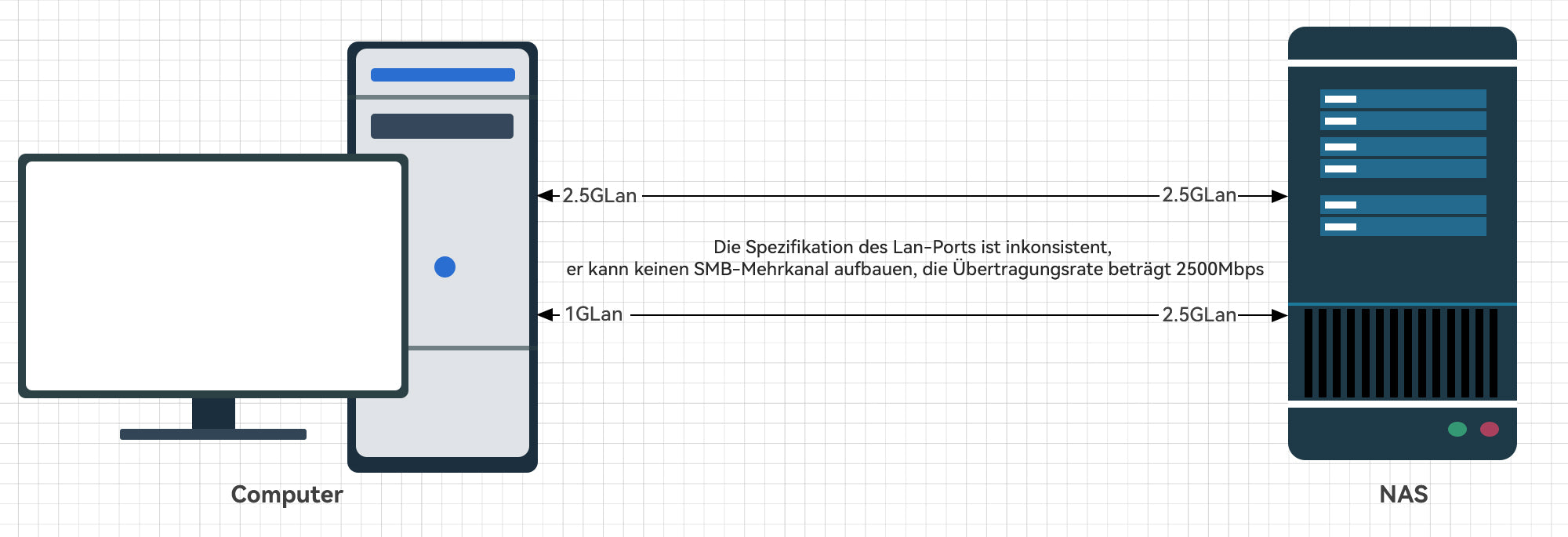
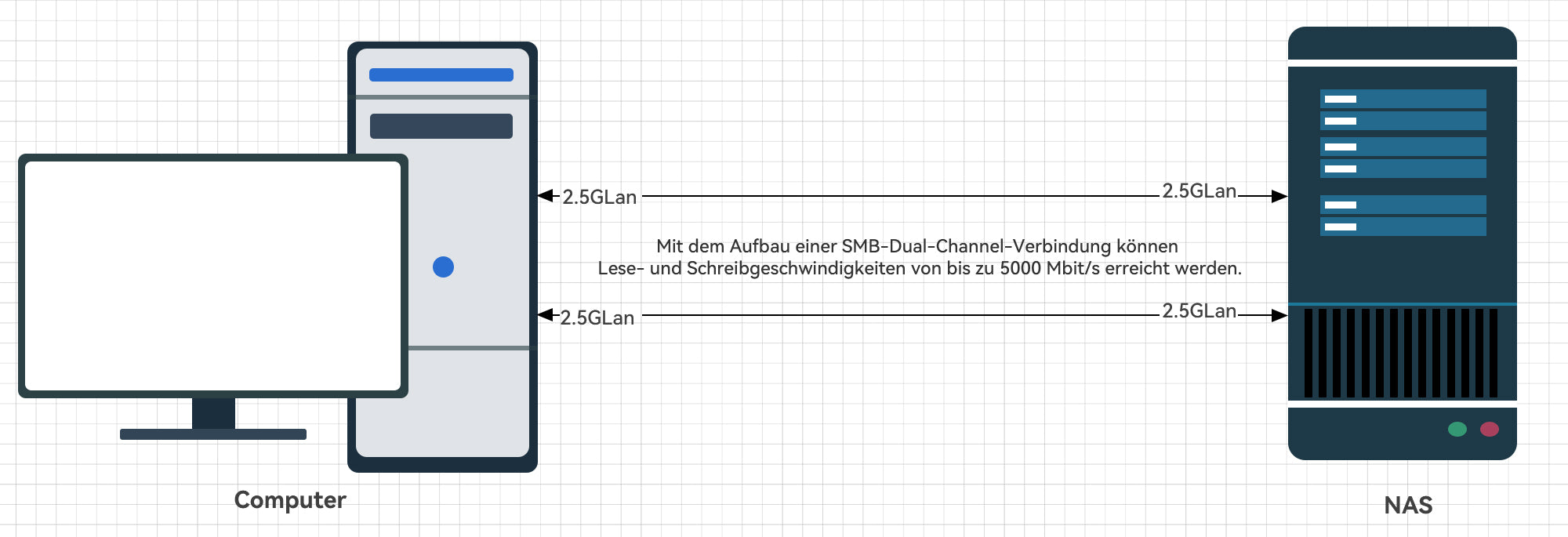
2. link aggregation
Advantages:
The role of link aggregation is to increase the connection bandwidth, and the maximum bandwidth of the aggregated connections can reach the sum of the bandwidth of the member connections. If an active link fails, traffic can be redirected to other available member links, improving the reliability of the link aggregation interface. In addition, load balancing can be realized on each active member connection within a link aggregation group.
Explanation:
Link aggregation is similar to hard disk arrays, different arrays have completely different effects, such as RAID 0 can overlay the speed, RAID 1 is mirrored.Link aggregation is: Bond-0 mode allows you to superimpose the speed of the two lines, while Bond-1 is similar to RAID 1 is the main standby mode, will automatically switch to the backup route in case of problems in the main line, but there is no superimposed effect on the speed of the network.
Unlike SMB Multi-Channel, Link Aggregation is a network-wide protocol that is effective for the entire system, regardless of which transport protocol type is used. However, special attention should be paid to the fact that some aggregation modes require switch support, such as Bond 0/4, which must run over a network-managed switch, while Bond 1/6 modes do not require switch support.
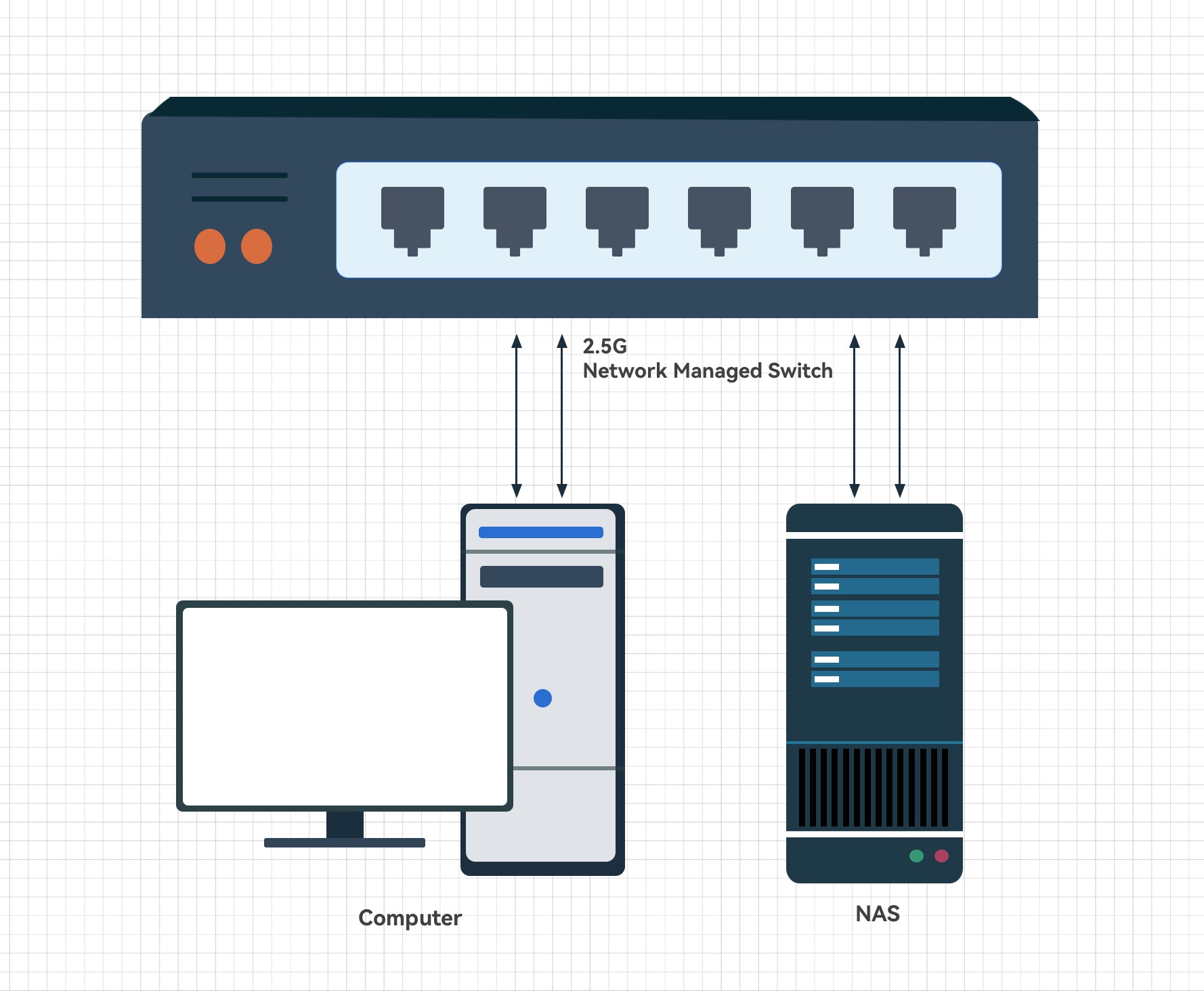
3. standalone mode
Explanation:
The MS-01 also has a PCIE 4.0 x8 connector. The most common use of this connector is to install a discrete graphics card, but besides discrete graphics cards, there are many other devices that can be expanded, such as network cards, SSD array cards, etc. A network card can be connected directly via a PCIE card. If you connect the SSD array card, you can group all-flash array NAS.
To connect the SSD array card, select the adapter card with PLX so that four M.2 PCIE4 can be connected. In this way, the original three M.2 ports can be converted into a combination of 7-bay NAS. If this is not enough, you can also connect the original left side of the M.2 port to connect a larger U.2 hard disk. A dual 10GbE NAS host with 7 hard disk bays and 4 network ports provides both storage capacity and transfer speed.
4. bridge mode
Explanation:
Bridge mode enables the connection between devices. This simply means that originally a channel could only be connected to one location, but now it can be connected to two locations via the bridge function and the devices on the LAN can achieve a faster transmission speed.
Attention:
The name of the amplified wireless signal is not the same as the wireless signal name of the original router.
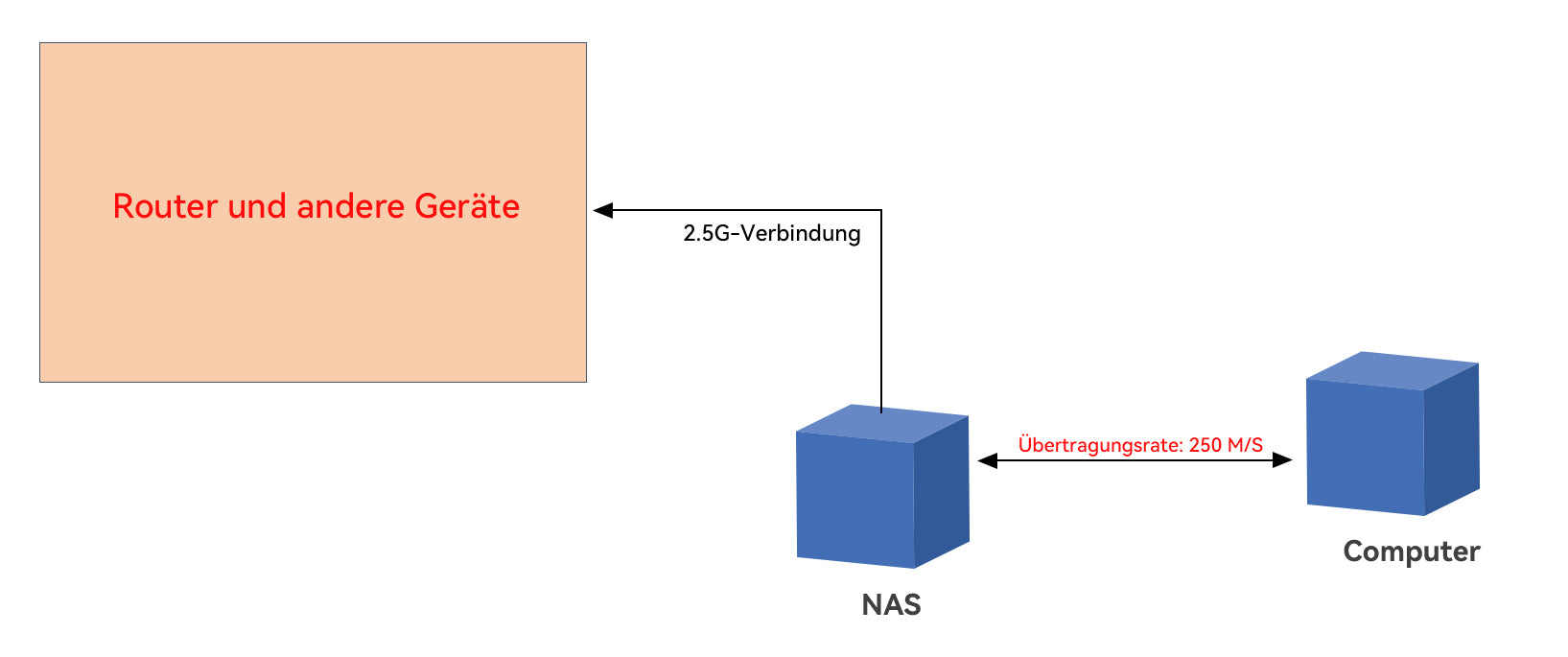
5. PON Stick
Explanation:
The PON stick can use the SFP port on the switch to complete the optical signal conversion. It can be plugged into a switch, router or network adapter with an SFP port instead of a larger optical network unit (ONU). It offers the full functionality of the optical cable.
It should be noted that the MS-01 itself cannot replace the optical PON stick. If you need to replace it, you will need to purchase your own to meet your needs.
How it works:
The PON stick is responsible for dialing, and only the primary route is connected in the setup phase to complete the network initialization settings. A cable is then connected from the LAN port of the primary route back to the switch to use it as a port for the wired MESH network. Then set the interface of the secondary route to the LAN interface in the VLAN setting of the switch, and then you can complete the network setup of the router through the switch.
If the primary route needs to dial, it is not necessary to use the PON stick to dial. Confirm the mode as bridge mode in the setting interface of PON stick, and complete the optical to electrical settings. Then the primary router will complete the dialing process, and the remaining steps are the same as the previously mentioned settings.
PCIE 4.0 x8 Port
The MS-01 also has a PCIE 4.0 x8 connector. The most common use of this connector is to install a discrete graphics card, but besides discrete graphics cards, there are many other devices that can be expanded, such as network cards, SSD array cards, etc. A network card can be connected directly via a PCIE card. If you connect the SSD array card, you can group all-flash array NAS.
To connect the SSD array card, select the adapter card with PLX so that four M.2 PCIE4 can be connected. In this way, the original three M.2 ports can be converted into a combination of 7-bay NAS. If this is not enough, you can also connect the original left side of the M.2 port to connect a larger U.2 hard disk. A dual 10GbE NAS host with 7 hard disk bays and 4 network ports provides both storage capacity and transfer speed.
